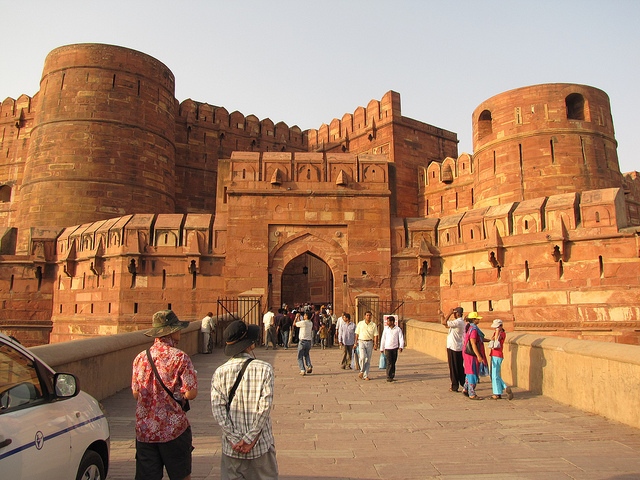Agra which lies on the west bank of river Jamuna became one of the principal cities of the Mughal Empire after the death of Ibrahim Lodi at Panipat in 1526. When Akbar choose Agra as his capital he laid the foundation of the Fort of Agra. After Taj this was one of the most important group of buildings. The construction was started in 1565 and was completed in about eight years at a cost of thirty five lakh of rupees under the superintendence of Qasim Khan Mir Barr-u-Bahr. This fort was just one of the many large fortified residences that the emperor wanted to have at various strategic points of his empire. According to contemporary chroniclers like Abul Fazal the fort contained over five hundred buildings. But later on Akbar's descendants added new buildings, mainly in marble to the fort and demolished the old ones.
Built principally as a military establishment by Akbar in 1565, the red sandstone Agra fort was partially converted into a palace during Shah Jahan's time. Though the principal structure was built by Akbar, many more additions were made by his grandsons. This massive fort is 2.5 kms long and is considered as the predecessor of the Delhi Red fort.
Also renowned as the Red Fort of Agra, Agra Fort is located near to the Taj Mahal gardens on the banks of River Yamuna. The real specimen of architectural marvel, this fortress was constructed in the 15th century. The construction of this mammoth structure started during 1565 during the Great King Akbar and continued the developments up to the period of King Shah Jahan, the grandson of Akbar.
The fort, in a length of 2.5 km marvelous enclosure walls, is built in red sandstones and encloses many monuments which are real architectural wonders. Many exquisite palaces such as the Shah Jahani Mahal, Jahangiri Mahal and the Khas Mahal, and audience halls named Diwan-i-Am and the Diwan-i-Khas are enclosed in the fortress. Other monuments include the Fish Pavilion, the Nagina Masjid, Garden of Grapes and the Pearl Mosque.
Agra fort, one of the world heritage sites, is really a worth place to visit to view the marvelous architectural beauty in red sandstones and is a place not to be missed by historians and architects.
The building and structures inside the fort gives an impression of a city within the city. Many of the building inside the fort is now closed for the public.
Image Credit:

